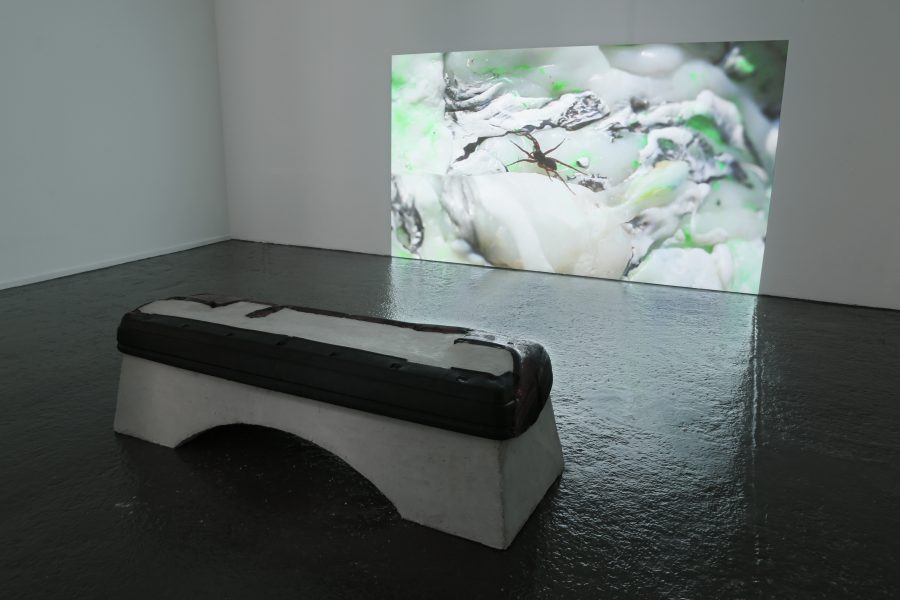Cementa & Toyota – A Fable of Two Sisters
HD video with sound, 08:51 minutes, 2016
A film about two sculptures and their location in the industrial harbor of Malmö, Sweden.
The two sisters, Cementa and Toyota, reside on the last strip of public land amidst a large depot of imported cars and a colossal cement silo.
These two site-specific sculptures, one cast in concrete the other moulded in HDPE plastic from the area, contemplate on their situation, vaguely aware of the synthetic, artificial nature of themselves and their surroundings.

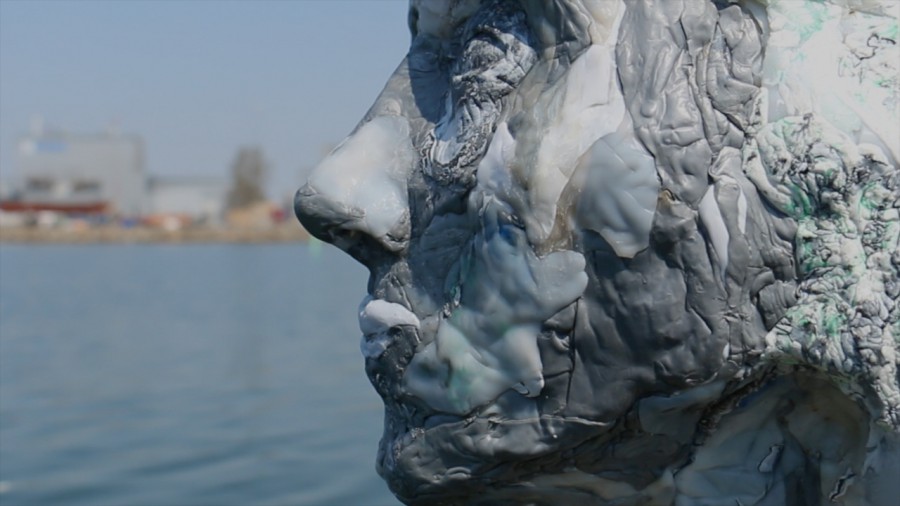
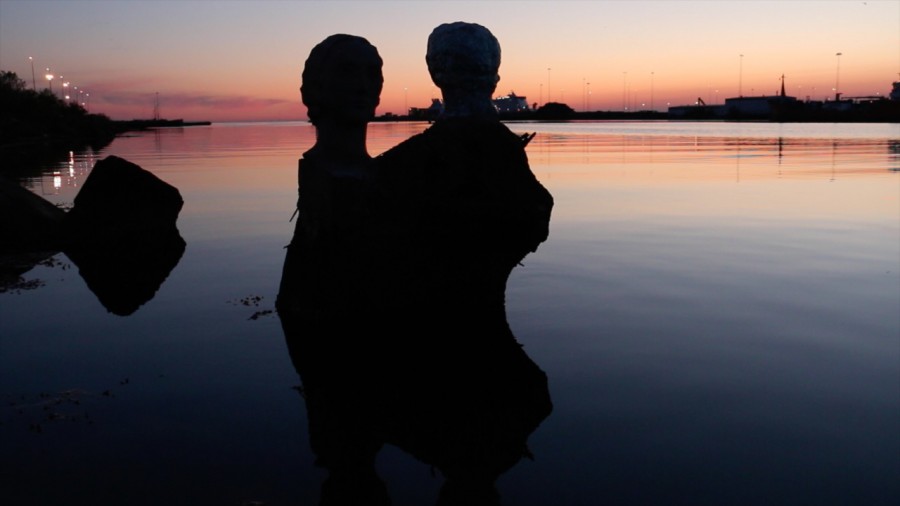

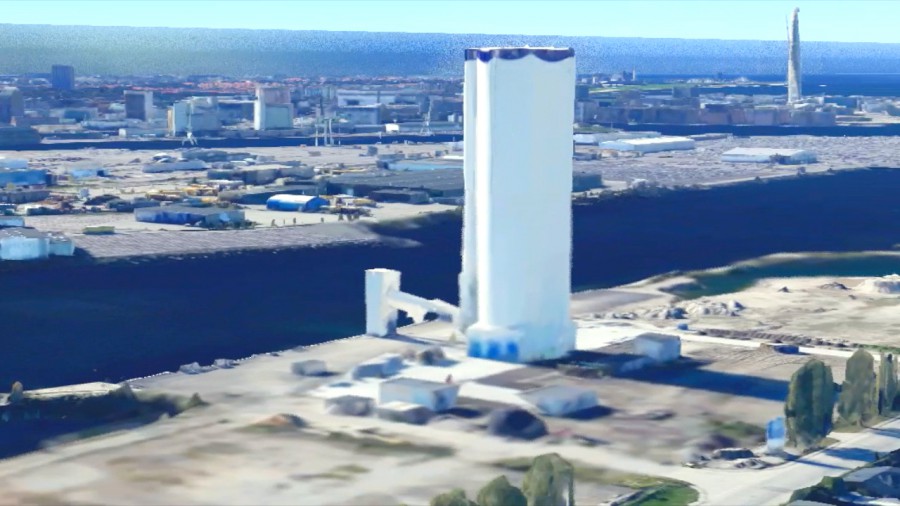
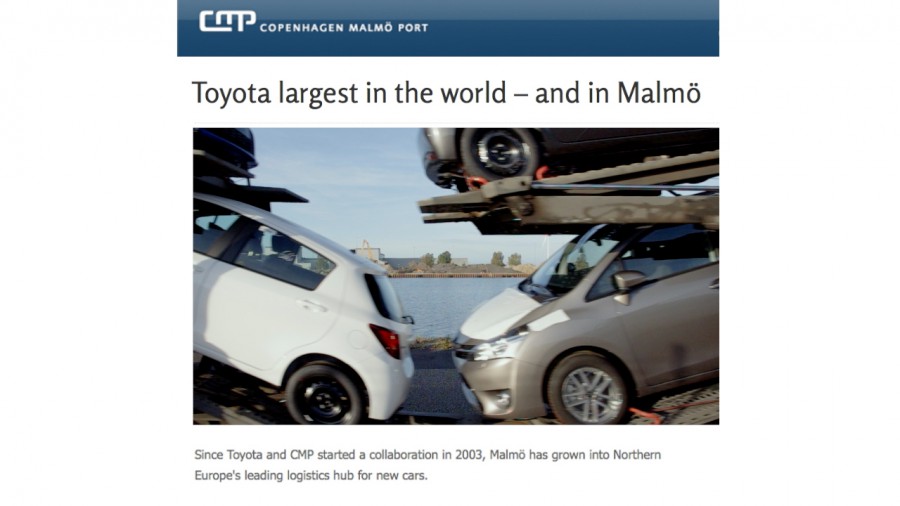
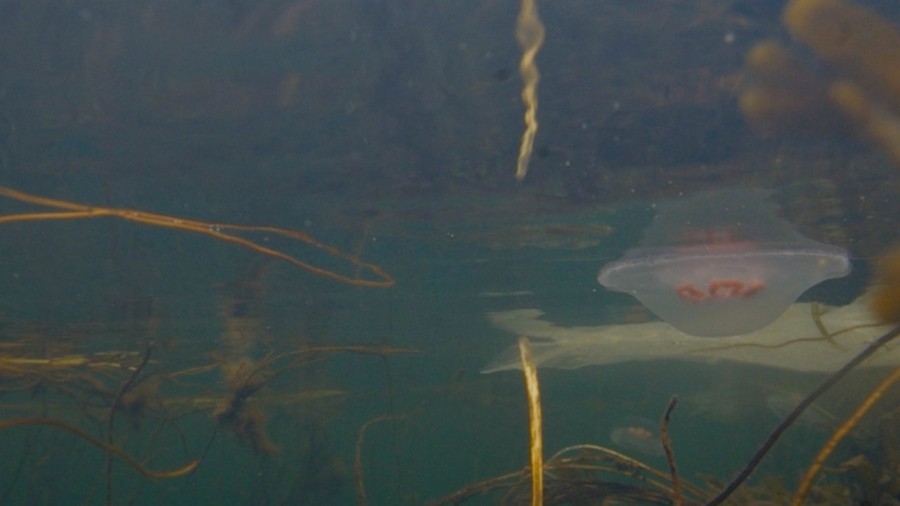
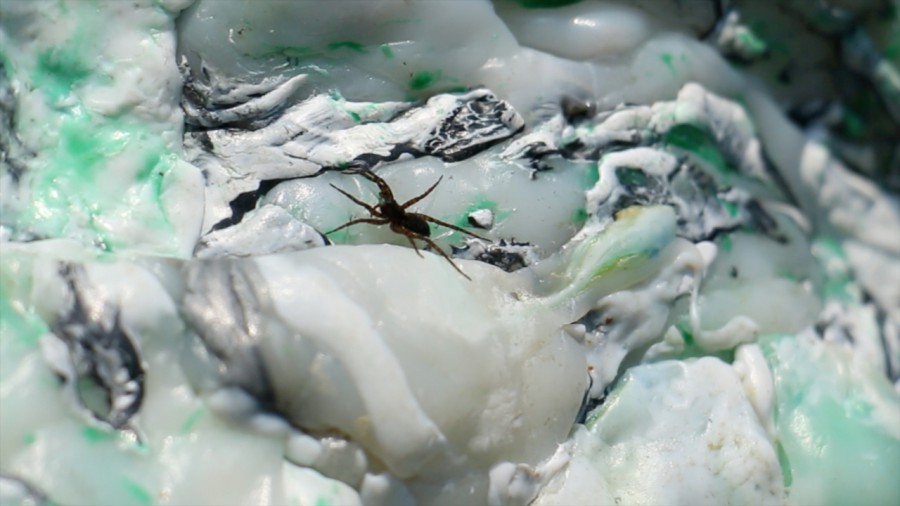
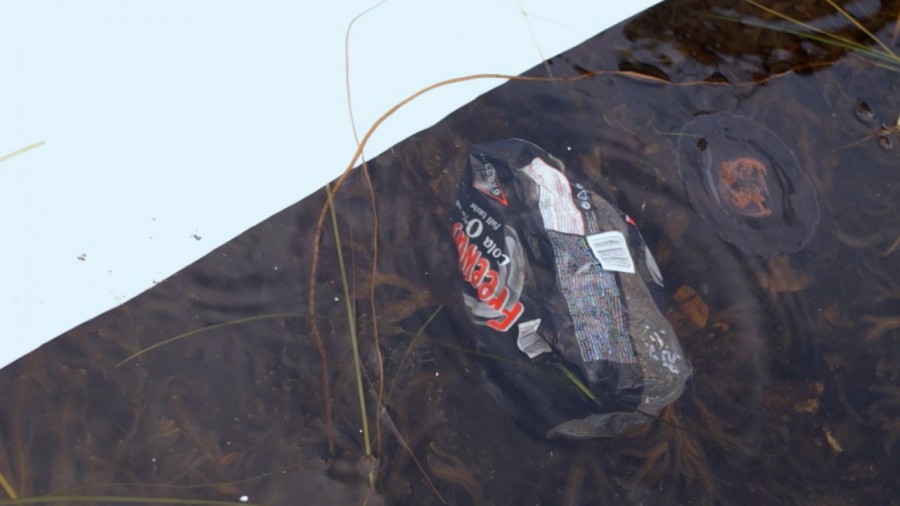
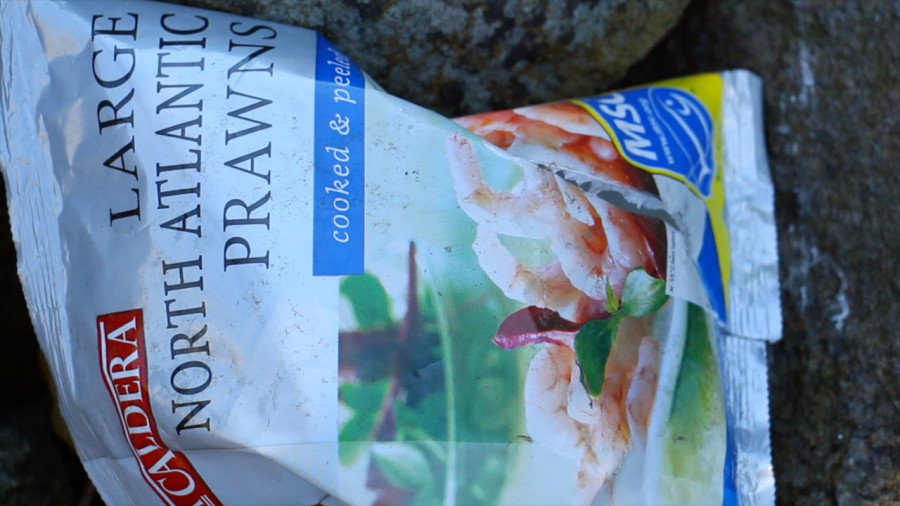
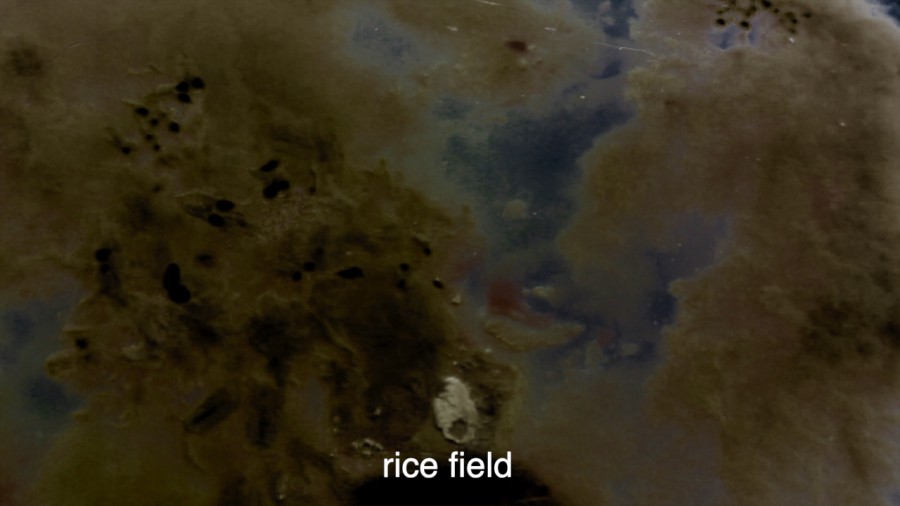
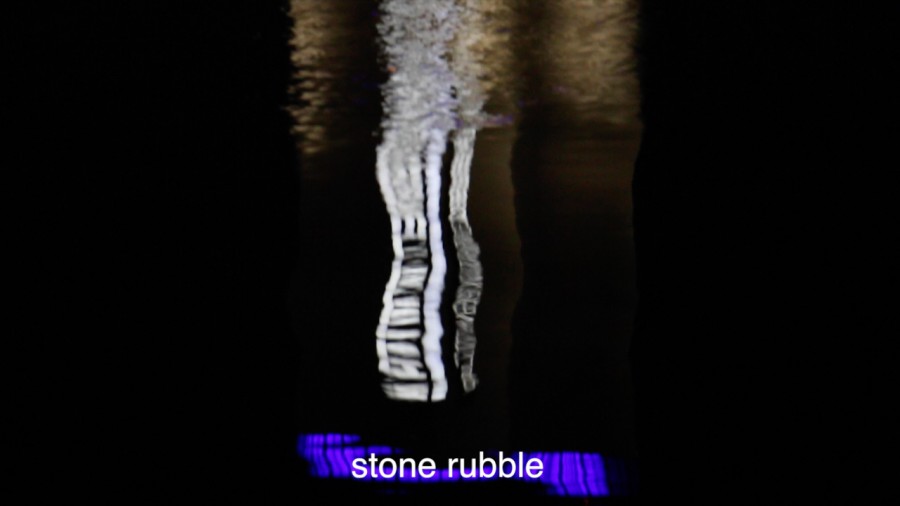
Cementa & Toyota – A Fable of Two Sisters
(video stills) HD video with sound, 08:51 minutes, 2016
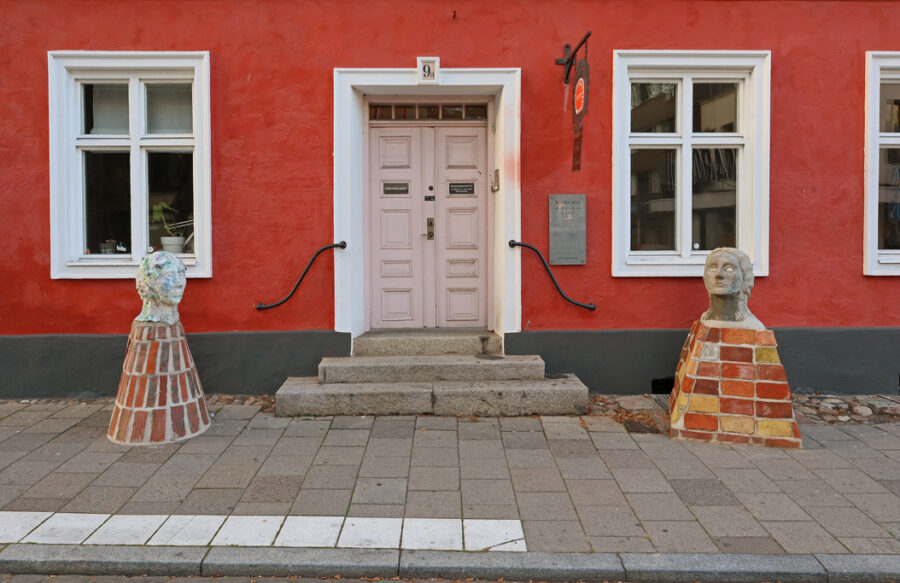
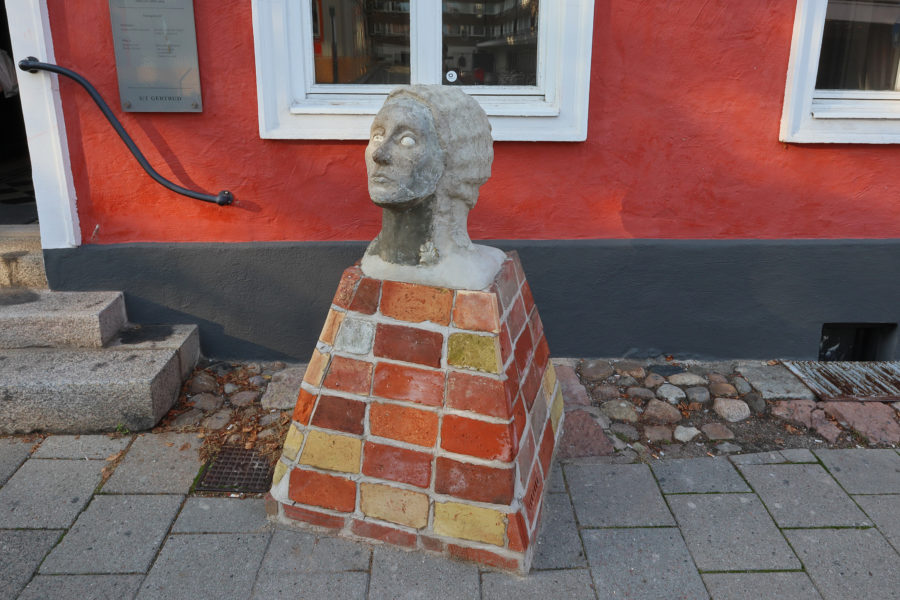
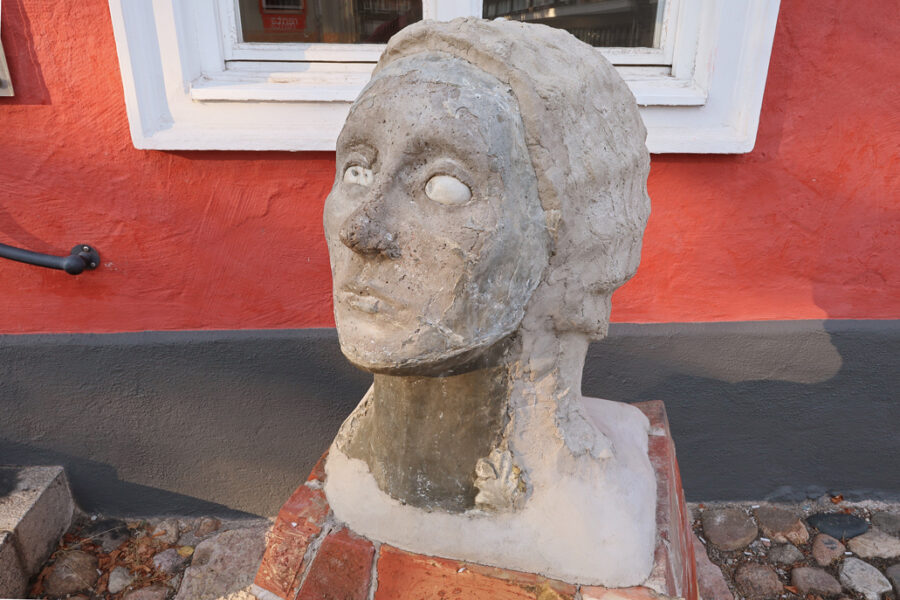
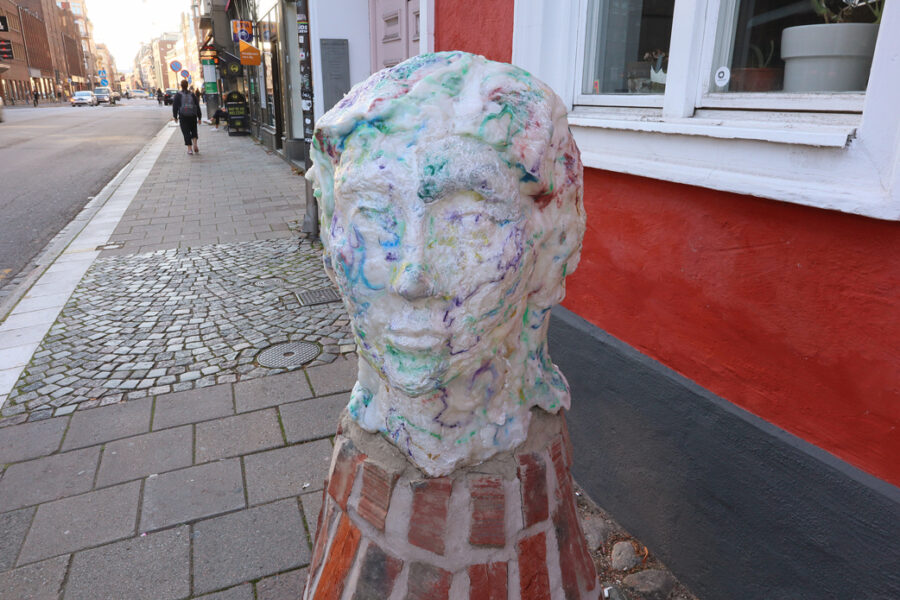

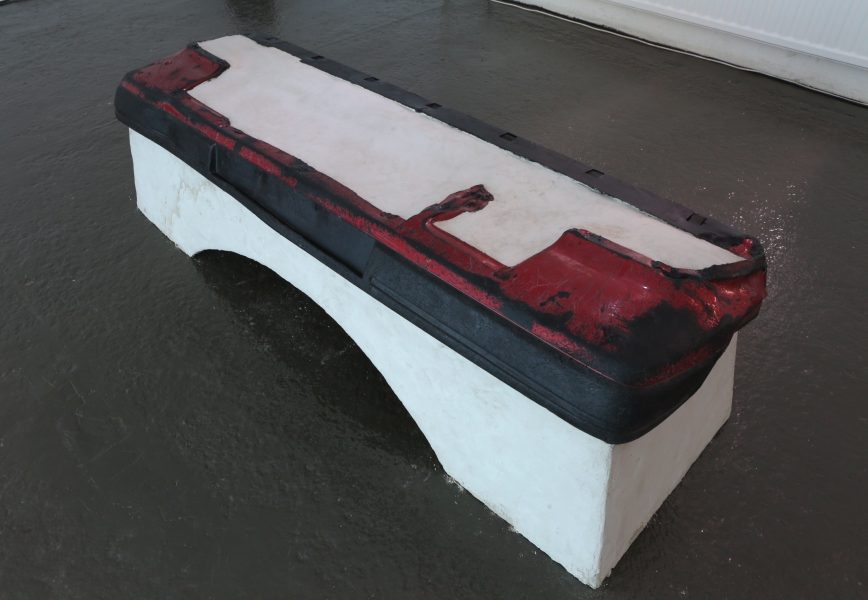
Drifter
concrete and car bumpers, 45 x 170 x 50 cm
video installation with the sculpture as a bench from the exhibition Paragoge at Skånes konstförening, Malmö, Sweden, 2017
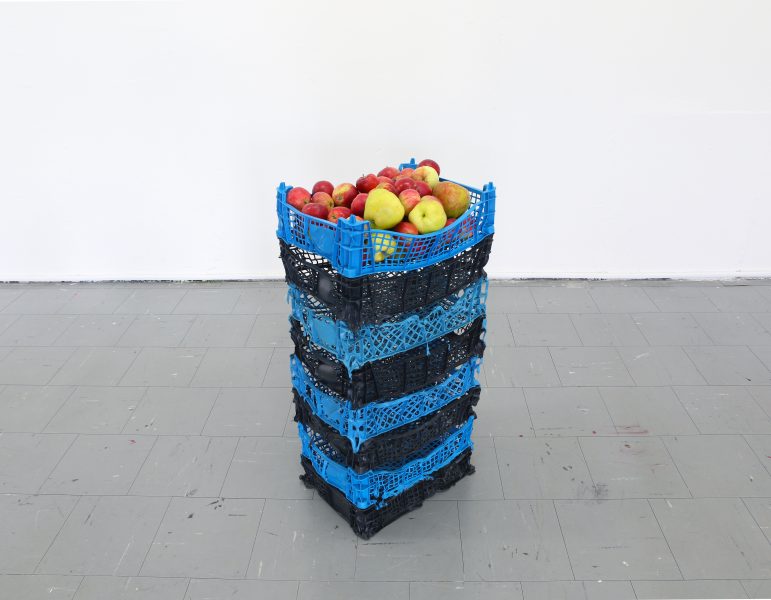
Biofoul
HDPE & PP plastic and apples from the industrial harbor of Mellersta hamnen in Malmö, Sweden.
80 x 45 x 35 cm. Apples served to exhibition visitors viewing the video Cementa & Toyota – A Fable of Two Sisters at Skånes konstförening, Malmö, Sweden, 2017
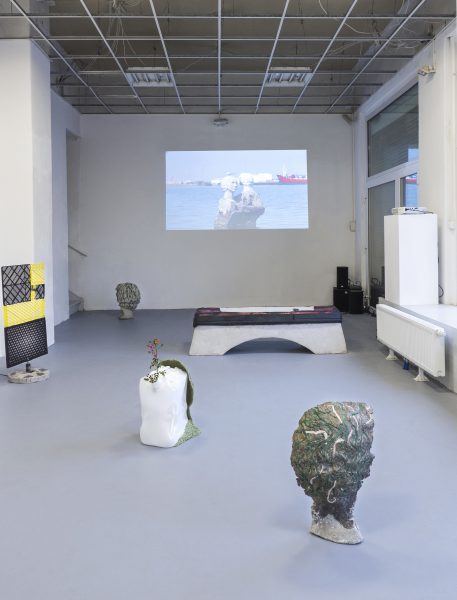
video installation from the exhibition corrupted full of life at Schimmel Projects – Art Centre Dresden, Dresden, Germany, 2018
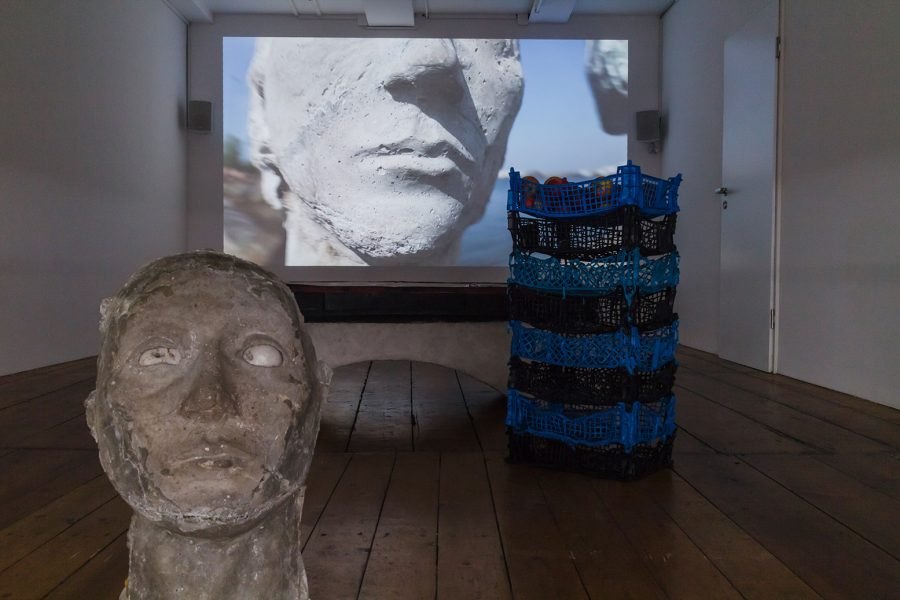
video installation from the exhibition Cementa & Toyota at ACUD gallery, Berlin, 2017.

video installation in the group exhibition Aperto at Fondazione Antonio Ratti, Como, Italy, 2016
Essay text for duo-exhibition Paragoge* at Skånes konstförening,
by curators Hans Carlsson and Sebastian Dahlqvist:
Paragoge1
Mellersta hamnen (The Middle Harbor), one of the central ports of Malmö, is located outside what is considered to be the city’s historic center, surrounded by a canal. The harbor has been of central importance as an economic engine for the city’s financial expansion and its development during the 18th and 19th century. Matti Sumari’s Cementa & Toyota – A Fable of Two Sisters is an essay film about two site-specific sculptures located in Mellersta hamnen, on a forgotten deserted strip of artificial land, among fenced industrial areas in the outskirts of the harbor area. The site is the last part of public land outside of Toyota’s depot for new vehicles, watched over by Cementa’s huge cement silos. The sculptures depict the sisters Cementa and Toyota. The film unfolds through a dialogue between the two creatures, one cast in concrete and the other in HDPE plastic; materials collected from the sculptors’ surroundings. At this artificial site, the sisters contemplate their environment, reflecting upon their living conditions and surroundings. The video is shown alongside the sculpture Drifter (which also serves as a seat), Biofoul (offering the visitors apples from the harbor) and the sculptures Residuals / Age of Shiny: mutated relatives of the video’s protagonists, amalgam mashups, made of synthetic materials.
Situated east of Mellersta hamnen, beyond railroad tracks and a golf course, one finds the carrier pigeon clubs of Valdemarsro, Brevduveklubben Fram and Malmö Brevduveklubb. In total the clubs, run by enthusiasts, have 18 cottages that can hold up to 300 pigeons between May and August. In other places in Malmö carrier pigeons have disappeared in favour of allotments, but the club in Valdemarsro is still there. Petter Dahlström Persson’s sculptural installation Tidens budbärare is based on the distinctive architecture that characterizes the carrier pigeon clubs at Valdemarsro. An architecture that has emerged based on the habits and needs of the carrier pigeons. The wooden houses of the clubs have spread organically across the area, without any overall plan.
The media revolution of the 19th century can be regarded as a revolution of writing, the telegraph wrote over space, the camera wrote light, and the phonograph wrote sound.
The carrier pigeon was a precursor to this type of writing, in the meaning of (mass) communication. The carrier pigeons messages were also primarily written messages, transported across distances and areas that were difficult or time-consuming to other forms of human communication. Not least in times of war when the carrier pigeon transported messages over sea and land, from war areas back to the pigeon’s homes.
The use of carrier pigeons decreased when the telegraph became popularized, eventually transforming the carrier pigeon activity into a sports and leisure activity.
1 Paragoge is a term for a letter or a syllable that is added to a word by ”natural” language use, or because of grammatical rules. As in the use of spontaneous language sounds that have been given lexical significance over time, as in ”among-st” (previously among). From Greek para – alongside and agōgē – carrying.
In his project, Dahlström Persson is interested in the fact that photographic techniques, as well as other methods of mass communication, developed as the interest in carrier pigeons decreased. He states that: ”In the same technological revolution that the telegraph and the phone belonged to, the photograph entered the scene. And today, with the observational eye of the photographic lens, I now capture the letters of the pigeons as it appears today.”
*
The way Malmö is expanding can be described as in many ways, albeit not only, by the word sprawl, a term that has been widely used also to describe cultural phenomena. Sprawl is a concept of urban development that takes place without center formations, and without hierarchies between center and periphery. If European cities are concentrated around a cultural, social and financial center, the cities that sprawl are rather built around several nodes of equal value. Los Angeles and other US cities, dependent on road transports to function, have been taken as an example of this. The sprawling that occurs in Malmö is often linked to the expansion of places for consumption, outside the city or in the outskirts of the city. This is the case with Emporia Shopping Center in the new Hyllie district, between the city center and Öresundsbron. The cultural geographer Guy Baeten has described the expansion in Hyllie as an attempt to establish a logistics center that binds together strong-scale groups in the Malmö and Copenhagen area.2 When a city sprawls it often does so in relation to the needs and movements of privileged groups.3
Sprawl is a controversial concept, loaded with negative connotations of an uneven geographical development, as well as positive notions of dynamic expansion and urbanism. As a term used in cultural theory, the word is no less debated. Sprawl has, among other things, come to symbolize a certain kind of poetry. A poetry that is not built around a conceptual core, a unified meaning, but instead refers to languages as a construction of simultaneous meanings, and different interpretations. In this way, poetry turns into a material, like building blocks where the author’s intentions or accepted interpretative methods give way to the text as part of a more neutral meaning-bearing network. The poet and architect Lars Mikael Raattamaa’s architecture and poetry has been related to the term sprawl. For example mallamerik, mallammer, malameri, mallame, amerik, mallameka, merrikka (the title consists of different anagrams of the world’s largest mall The Mall of America), which repeatedly makes the language sprawling in long monologues (which is often also about language), as unplanned as the sites referred to in the text. As under the heading ”Alternative communities”: ”There is nothing before the language, but there is
2 Guy Baeten, “Normalising Neoliberal Planning: The Case of Malmö, Sweden”, in: The GeoJournal Library: Contradictions of Neoliberal Planning Cities, Policies, and Politics, ed., Guy Baeten and Tuna Ta ̧san-Kok, Dordrecht, Heidelberg, London, New York: Springer, 2002.
3 Guy Baeten, “Normalising Neoliberal Planning: The Case of Malmö, Sweden”, i: The GeoJournal Library: Contradictions of Neoliberal Planning Cities, Policies, and Politics, ed., Guy Baeten och Tuna Ta ̧san-Kok, Dordrecht, Heidelberg, London, New York: Springer, 2002.
becoming-language / — / in the first hill there is a Chinese restaurant in the other a candy factory and in the third hill there is a retirement home, it is good like that.”4
For those who have a positive understanding of sprawl, the concept has an ability to depict a development where hierarchies between meaning and non-meaning, and different types of values are of no importance.
In an essay in the magazine OEI Art historian Milou Allerholm describes movements in arts development in the 1960s and 1970s, which in many ways resemble the qualities that can be termed sprawling: ”Within dance, the disciplined classical exercise was replaced by the movements of everyday life or of the unschooled body, within the fine arts a field opened for the most ordinary phenomena.”5 Allerholm’s focus in the text is a specific work, The Aerial Kit – Bland människor emellan 1809-1989, produced by the artist collective Vavd Editions (Peter Andersson, Måns Wrange, Pål Wrange and Lars Svensson).
The Aerial Kit consists of collected stories from and about the experience of flight, attempts to fly and other air-related adventures. The work took the form of a box, a yellow safety deposit box, where the stories were gathered. In the program explanation for the work, the group stated that ”‘The Aerial Kit can be read as a piece of alternative history about how people in, and beyond the enlightenment projects attempted to satisfy their everyday needs.’”6 In the box, one could, for example, read about the farmer Martin Swingberg who built a landing strip outside his farm, in order to ”receive visits from above.”
The Aerial Kit takes – more than conceptual art in general, according to Allerholm – its starting point in a specific delimited subject matter. It is interesting to note that this delimited matter is concerned with peripheral phenomenon, hobbies, and quasi-scientific projects. Allerholm writes that in a time of political and aesthetic deconstruction, The Aerial Kit ”appeared to be based on a genuine interest in storytelling, moreover, with a kind of ethnographic angle and an almost fetishistic relationship to the art object.”
*
Cementa&Toyota–AFableofTwoSistersa ndTidensbudbärarerevolvesaroundtwoof Malmö city’s outer districts, peripheral both socially and economically. These areas relate to a city’s organic expansion, a kind of sprawl that contrasts with the city’s more financially controlled expansion. The two projects, similarly to The Aerial Kit, throw a curious and exploring look at these areas and the activities that take place there. It is possible to make
4 Lars Mikael Raatamaa, mallamerik, mallammer, malameri, mallame, amerik, mallameka, merrikka, Stockholm: Albert bonniers förlag, 2008, pp. 81-82.
5 Milou Allerholm, “The Aerial Kit: Bland människor emellan 1809-1989”, i OEI nr 52, 2011, p. 373. 6 Allerholm, “The Aerial Kit: Bland människor emellan 1809-1989”, 2011, p. 375.
More comparisons: the two projects also have the common purpose of placing an outside-of-human perspective on their study objects.
Sumari’s mutated plastic and cement protagonists residing on a rock in the Baltic Sea, makes one think of maritime spirits, who seem to guard over Mellersta hamnen like contemporary poseidons, or figure heads (which historically have been used to protect ships and their crews).
Theocean’smythologicalfigureswereactuallyalreadybeforeC ementa&Toyota–A Fable of Two Sisters used as the subject matter in artworks in the Malmö area. In 1944, the artist Edward Dahlskog made a fresco to the train ferry Malmöhus,7 a version of The Birth of Venus, the Renaissance painting by Sandro Botticelli. The Birth of Venus has been described as a kind of key painting in the history of humanism, and Venus appears in the painting, as in Dahlskog’s fresco, born out of the sea, to bring to people both worldly and divine beauty.
Dahlström Persson’s art places the animal in the center. Svenska brevduveförbundet (The Swedish Carrier Pigeon Association) has about 250 organizations as members and the sports have followers around the world. Carrier pigeons are of course only one of many animals that have been very important to human development. With historian Donna Haraway, it is possible to consider these relationships between humans and animals as value creating networks, which not only place humanity in relation to animal needs, wills and influences, but also focuses on precisely the meeting of different organisms: it is in such a meeting that ecological, economic and social systems are created. Apparent not least in the architecture that characterizes the pigeon carrier club at Valdemarsro.
This focus on the “meetings between species”, can with advantage be extended to not only relate to the meetings between animals and human beings, but also mythical beings: creatures that historically resides in art, or lives at a rock in Mellersta hamnen i Malmö.
– Hans Carlsson and Sebastian Dahlqvist
7 The painting is currently at the Technology and Maritime Museum, Malmö Museum. Not far from mellersta hamnen.
